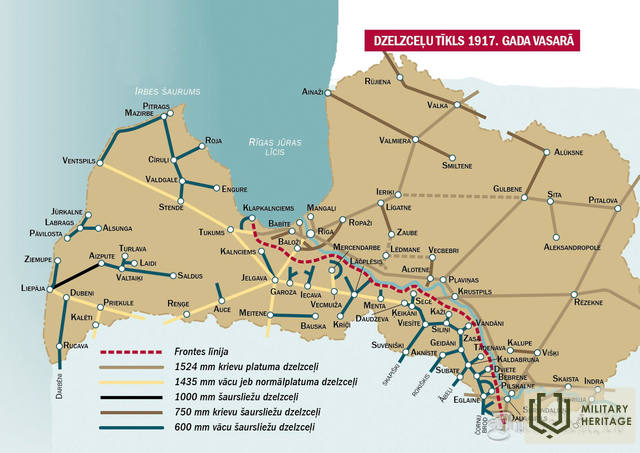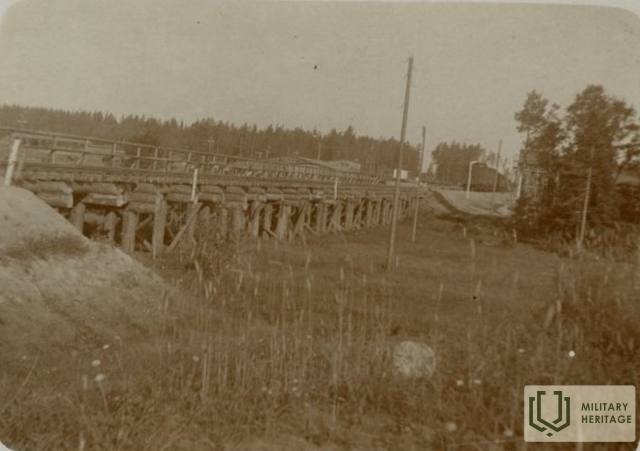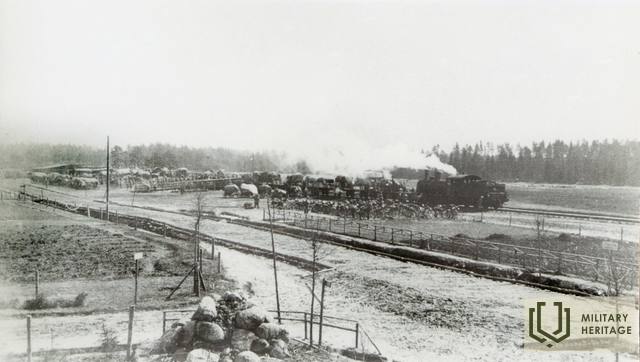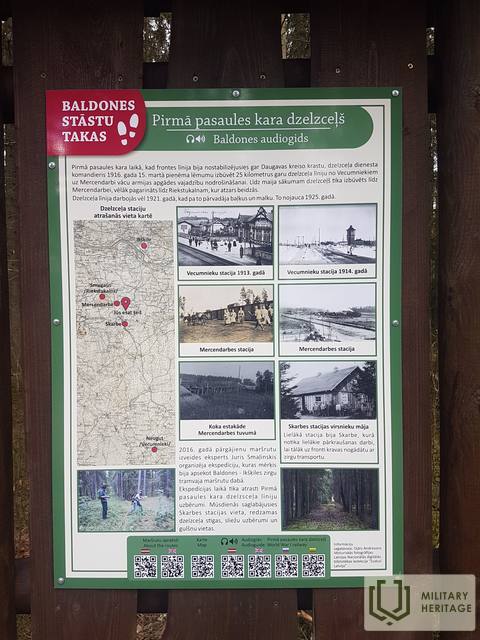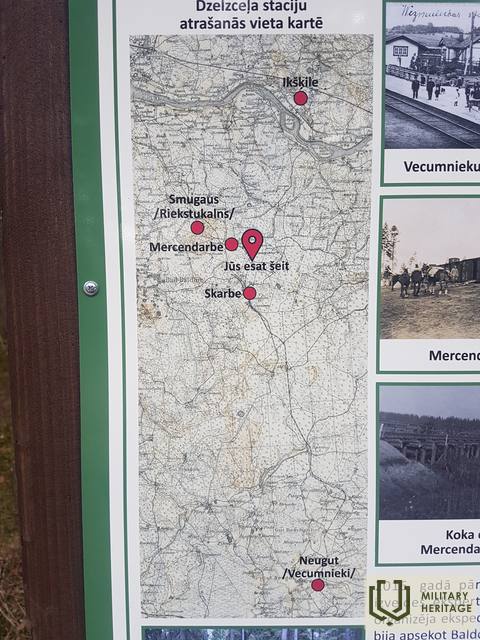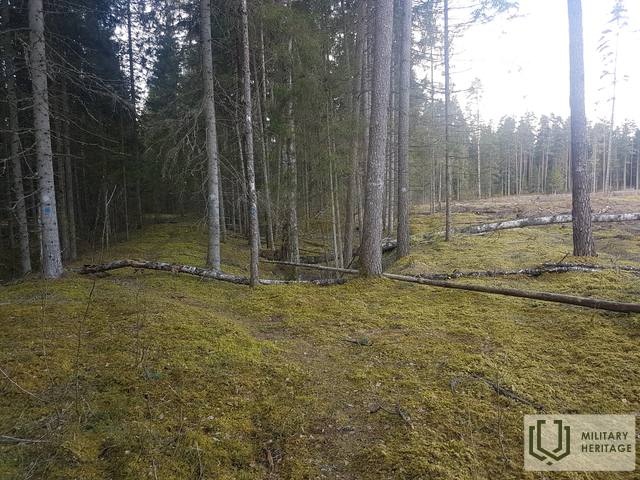Section of the German military railway on the Mercendarbe-Skarbe route
Infrastructure
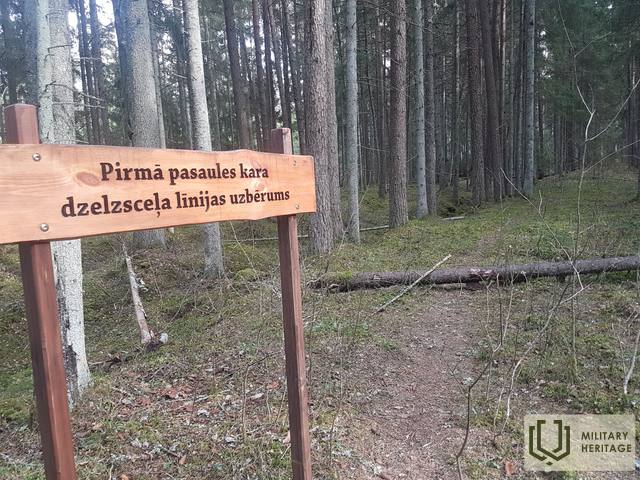

 40
40




The former railway route is clearly visible in nature, as the railway embankment has been preserved for practically the entire section of the road, where there is a forest today. When walking along the embankment, pay attention to the ground cover - it is possible to see the preserved places of sleepers. Today, some of the railway sections serve as the base of roads, for example, as a trail for logging. Near Mercendarbe Manor, the railway embankment has been leveled, but near Riekstukalns, where the forest resumes, it continues.
O. Anderson, a researcher of Baldone history, writes about the history of this railway as follows:
“During World War I, when in 1916 the front line had stabilized along the left bank of the Daugava River in order to supply the German army, on March 15, 1916 the commander of the army railway service decided to build a line from Vecumnieki to Mencendarbi. The length of the line was 25 kilometers. On March 30, 5,000 workers began work and by May 1, the line had been built to Skarbe station, and by May 6, to Mercendarbi. The railway began in Vecumnieki, as the Neugut Kurland station, then the Nougut Nord, Birsemniek, Gedeng, Skarbe, Merzendorf stations (German names). Later, the line was extended to Riekstu Kalnas and to Vilki Kalnas opposite Ikšķile. Since the Jelgava-Krustpils line had already been rebuilt to the German (Western European) gauge, a line with 1435 mm wide. It was no longer some kind of ''little bridge'', but a normal railway. The largest station was Skarbe. The largest cargo handling works also took place there, so that they could be transported to the front by horse transport. The railway line was still in operation in 1921, when logs and firewood were sent along it. It was demolished in 1925. Today, the site of the station has remained intact, you can see the railway track, the embankment of the tracks, and the places of the sleepers. It is amazing that after 100 years we can walk along this railway. It just feels like a train is coming right now and we will have to step aside.”
Used sources and references:
https://www.baldone.lv/lv/turisms/notikumi/1570_pargajiena_marsruts_skarbes_stacija__mercendarbe__riekstukal/




